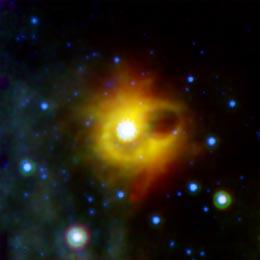With this election there are many questions related to how the presidential candidates feel about global warming and its future effects on the United States. When John McCain is asked about global warming, he usually responds with something like, "I will clean up the planet; I will make global warming a priority." Barack Obama likes the phrase "I will clean up the planet." And Tina Fey as Sarah Palin says it's just God hugging us closer. So if this is such an important stance for presidents to be confident about, why do people say global warming's not true? Even if it isn't true, it's not bad if people are more environmentally friendly.
I'm not completely sure how I feel about the issue of global warming. I can see cases in which it appears to be a legitimate problem and then other cases where it doesn't make any sense. But I know it doesn't matter which way we want to look at it. People should ignore the issue of what it's called and focus on the benefits of Earth-friendly actions.
People seem to be torn on this issue for many different reasons. Some blame any type of extremely hot weather on global warming but then scoff at the thought of it being real when it's lower than 110 degrees outside. The issue is taken too far by pushing every commercial product into a "green" form and the matchbox sized Smart Cars that people drive. It's also pushed a little much by Hollywood and celebrities battling to be the most green.
When this issue was brought up in class last week, my friend and senior political science major Ben Wall said, "Earth has been here for billions of years, and it has gone through many changes. Global warming is just another change, just another one of Earth's cycles. I'm not saying don't be careless or don't go green; it's good to be resourceful. I'm just saying that global warming is just something for people to talk about."
I agree with his last statement about global warming being a trend or a conversation starter because I've seen its effect on the presidential campaign and Hollywood. Maybe it would help if we thought of global warming as sort of a Santa Claus for adults. Some parents tell their children about Santa for years, and the children just abide by the rules of conduct of this so-called Santa.
Like I've mentioned in previous articles, Starkville could help supply more options to help people be more conscious of their environmental actions, but at least there are a few options for people.
I can easily see the issue of global warming on a TV show such as "I Love The '00s" in about 15 years, completely harassing ourselves for believing in an idea as crazy as this.
I can see it becoming a more serious factor for how we live.
And I do feel there are more important issues for presidential candidates to be concerned about, such as the economy or their running mates, but global warming can't be completely ignored for fear that people will quit believing in the effects that it can have on the world.
It's much smarter to be on the safe side when issues like this are potential death threats from the environment. I personally don't know the point of not believing in it. It shouldn't necessarily be used as an excuse for everything bad that happens in the world but as a backbone of being more resourceful. And now that the weather is getting cooler and it's more comfortable to walk to class instead of driving a car, this can be a jumpstart for people's attempts to battle global warming, whether it really exists or not.








